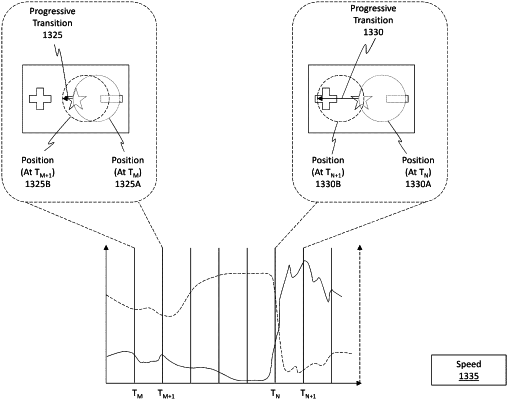| CPC G06T 7/33 (2017.01) [G02B 27/017 (2013.01); G06T 7/11 (2017.01); G06T 7/174 (2017.01); G02B 2027/014 (2013.01); G02B 2027/0138 (2013.01); G02B 2027/0178 (2013.01)] | 20 Claims |

|
1. A computer system configured to correct an overlay misalignment between an external camera image and a system camera image and to minimize observation of the correction by scaling performance of the correction based on detected movement conditions, said computer system comprising:
a system camera;
one or more processors and one or more computer-readable hardware storage devices that store instructions that are executable to cause the one or more processors to:
acquire a first system camera image generated by the system camera and acquire a first external camera image generated by an external camera;
perform a first visual alignment between the first system camera image and the first external camera image, wherein performing the first visual alignment includes generating an overlaid image by projecting at least some content included in the first external camera image on top of corresponding content included in the first system camera image, and wherein the at least some of the content is surrounded by a bounding element in the overlaid image;
modify a position of the bounding element in the overlaid image based on a detected movement of one or both of the system camera and the external camera;
acquire a second system camera image and acquire a second external camera image;
in response to performing a second visual alignment between the second system camera image and the second external camera image, compute an update vector indicating an amount by which the bounding element is to be moved to be at a correct position;
determine an amount of relative movement that the system camera and the external camera are currently experiencing relative to one another; and
based on the determined amount of relative movement, cause the bounding element to progressively transition to the correct position in the overlaid image based on the update vector, wherein a speed by which the bounding element is progressively transitioned is proportional to the determined amount of relative movement.
|